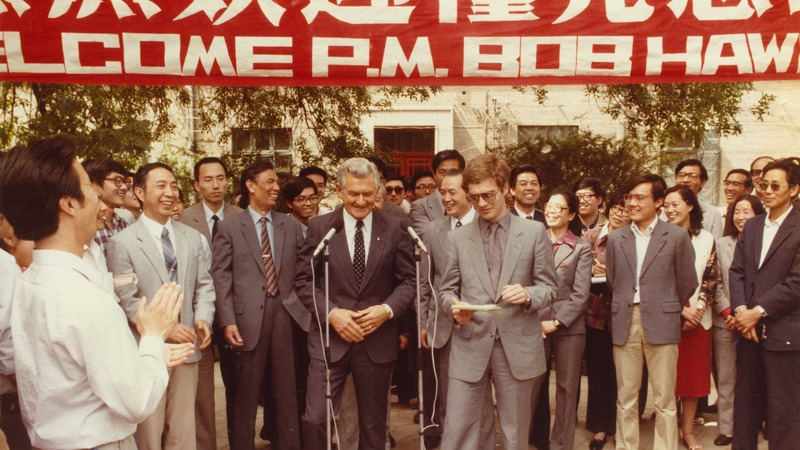Inside the tent: Bob Hawke's ringside seat to China's reforms, Beijing 1986
May 12 2023

Executive Summary
While speculation continues as to whether Prime Minister Anthony Albanese will visit the People’s Republic of China (PRC) this year – making it the first such visit since Malcolm Turnbull in 2016 – the time is ripe for reflection on arguably the most consequential visit in the relationship’s history, that by Bob Hawke to Beijing in May 1986.
To that time, Hawke’s visit to the Chinese capital and four provinces represented the highest point of the bilateral relationship since the foundation of diplomatic relations in 1972. Hawke’s access to the senior PRC leadership during this visit was unmatched by other major Western leaders in that era, including US President Ronald Reagan and British Prime Minister Margaret Thatcher. No future Australian leader would ever again be granted this kind of intimate entrée to the PRC’s political elite and their thinking about the country’s modernisation and its views of the world.
At the centre of the bilateral relationship in the mid-1980s was the close relationship that Hawke had developed over preceding years with two of the PRC’s reformist leaders, Premier Zhao Ziyang and Communist Party General Secretary Hu Yaobang. ‘On the big issues’, Hawke told Hu after the 1986 visit, ‘our objectives are identical and our approach is similar’. It was new language for an Australian prime minister where the PRC was concerned, but it also built squarely on the solid foundations laid by the Whitlam and Fraser governments.
This research report will show that during this critical 1986 visit:
- the Australian government welcomed PRC influence in the Pacific and committed itself to encourage those Pacific nations which did not recognise the PRC to keep their lines of communication open to Beijing;
- Hawke personally undertook to approach US Secretary of State George Shultz on behalf of PRC leaders in an attempt to resolve the status of Taiwan;
- Hawke was given extensive and substantial insights into Chinese thinking about reforms to the Communist Party and PRC economy;
- the iron ore trade that would come to occupy a key plank of long-term Australian economic prosperity was further developed; and
- The PRC’s leaders remained suspicious of Soviet aggression, wary of Japan’s long-term military intentions in Asia and critical of US regional objectives, especially over the ongoing sales of American arms to Taiwan.
The report features four parts. Section 1 establishes the context. It argues that the significance of the visit can only be understood against the backdrop of the development of Australia-PRC relations over the preceding decade, the extent of – and limits to – the PRC’s economic reforms under Deng Xiaoping and Bob Hawke’s approach to Australian foreign policy, in particular his appreciation of where the PRCs modernisation fitted into the broader narrative of the Asian economic growth story of the 1980s. Section 2 offers an analysis of Hawke’s discussions with PRC leaders, placing these exchanges within the setting of what some historians have called the ‘golden age’ of Chinese reform and openness. Section 3 explores the foreign policy dimension of the visit and Section 4 the visit’s meaning for the bilateral relationship. A conclusion attempts to identify the overall significance of the visit for both countries.
Author:
James Curran is Professor of Modern History at Sydney University and International Editor at The Australian Financial Review. He has previously worked at the Office of National Assessments, and in the Departments of Prime Minister and Cabinet and Defence.
To read the full paper please download the PDF
Related links
James Curran, 'Revealed: Australian PM’s most consequential visit to China', The Australian Financial Review, May 12 2023.

